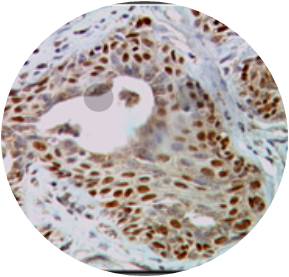Introduction
HOW TO EAXAMIN A SLIDE?
- Examine the glass slide by naked eye. Some tissues can be identified by the naked eye appearance; e.g. lymph nodes, blood vessels, appendix, and intestine.
- Use the microscope to examine the slide by low power lens to determine the architecture and the pattern of growth of the cells or tissue as liver lobules, lymph node cortex and medulla, and invasion of the intestinal wall by a tumor.
- Use the high power lens to study the details of the cells and tissue as Hodgkin's lymphoma.
ACUTE INFLAMMATORY CELLS:
- Neutrophiles or polymorphonuclear leukocytes: About 6-9 micron in diameter with granular cytoplasm, tri-lobular nucleus. The dead neutrophiles are called pus cells.
- Histiocytes, macrophages, monocytes: A large cell measuring 14-18 micron, with round, oval or kidney-shaped vesicular nucleus, and abundant pale cytoplasm.
CHRONIC INFLAMMATORY CELLS:
- Lymphocytes: Round, dark nucleus and scanty cytoplasm
- Plasma cells: Round or oval with abundant basophilic cytoplasm and eccentric oval nucleus. The chromatin in the nucleus gives it a cart-weal appearance.
- Macrophages: See above
- Eosinophiles: measures 10-15 micron with eosinophilic granular cytoplasm and bilobed nucleus.
- Fibroblasts: a spindle-shaped cells with an oval tapering nucleus and eosinophilic cytoplasm
- Giant cells: Large cells with many small vesicular nuclei and abundant pale eosinophilic cytoplasm.
HOW TO DESCRIBE A PATHOLOGICAL SECTION?
Microscopic description of an organ should be systematic to cover all structural components e.g.
- For liver sections: Comment should include covering peritoneum (normal or thick), lobular architecture (normal or distorted), central vein (normal r dilated), portal tracts (structure and presence of any lesions), hepatocytes (describe size, arrangement, their nuclei and cytoplasmic inclusions) and the sinusoids.
- For renal sections: Glomeruli, tubules, afferent and efferent arterioles and interstitial tissue should be evaluated and any change should be documented.
- For pulmonary sections: Comment should cover the alveolar spaces, alveolar capillaries and alveolar walls.
- Stomach and GIT: Comment on mucosa, mucosal glands, submucosa, musculosa and serosa.

